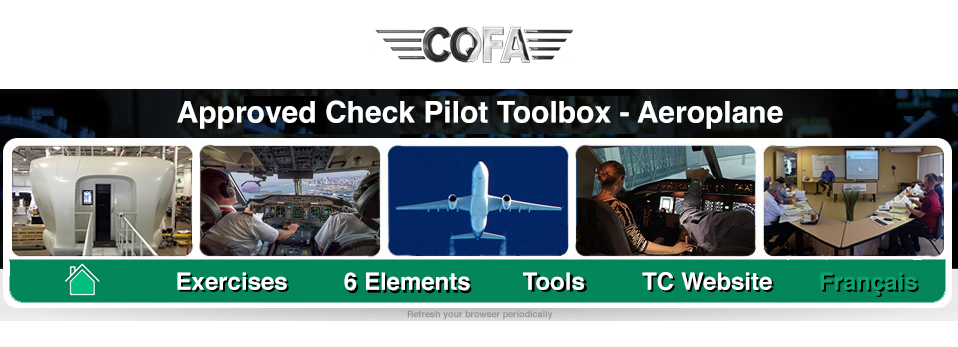4. Engine start/depart
Aim
Determine the candidate’s ability to; complete the correct engine start procedures including the use of an auxiliary power unit (APU) or external power source under various atmospheric conditions, conducting warm-up, run-up and system checks, recognize normal and abnormal situations, and take proper action in the event of a malfunction.
Description
The candidate will demonstrate the proper use of the pre-start, start and pre-taxi check lists and check the appropriate radio communications, navigation and electronic equipment and selection of the appropriate communications and navigation frequencies prior to flight.
Performance Criteria
(06/2017 FTG p.20) Assess the candidate’s ability to:
- ensure ground safety procedures are followed during the before-start, start, and after-start phases;
- ensure the appropriate use of ground crew personnel during the start procedures;
- perform all items of the start procedures by systematically following the approved checklist items for the before-start, start, and after-start phases;
- demonstrate sound judgment and operating practices in those instances where specific instructions or checklist items are not published;
- use the challenge-and-response (or other approved) method with the other crewmember(s), where applicable, to accomplish the checklist procedures;
- coordinate with ground crew and ensures adequate clearance prior to moving any devices, such as door, hatches, and flight control surfaces;
- demonstrate adequate knowledge of the pre-takeoff checks by stating the reason for checking the items outlined on the approved checklist and explaining how to detect possible malfunctions;
- divide attention properly inside and outside cockpit;
- ensure that all systems are within their normal operating range prior to beginning, during the performance of, and at the completion of those checks required by the approved checklist;
- explain, as may be requested by the ACP, any normal or abnormal system operating characteristic or limitation; and the corrective action for a specific malfunction;
- determine if the aeroplane is safe for the proposed flight or requires maintenance;
- determine the aeroplane’s takeoff performance, considering such factors as wind, density altitude, weight, temperature, pressure altitude, and runway condition and length;
- determine airspeeds/V-speeds and properly sets all instrument references, flight director and autopilot controls, and navigation and communications equipment;
- review procedures for emergency and abnormal situations, which may be encountered during takeoff, and states the corrective action required of the pilot in command and other concerned crewmembers;
- perform an avionics and navigation equipment cockpit check; and
- obtain and correctly interpret the takeoff and departure clearance as issued by ATC.
Commenting a "1"
- Engine started without ground crew coordination. Did not confirm area was clear.
- Engine started before checklist was completed. Checklist discipline not as per SOP.
- Unable to demonstrate proper knowledge of engine start procedures and limitations.
- Engines started while attention was outside the aircraft. Parameter/gauges not checked during start sequence.
- Unable to explain abnormal start conditions and corrective actions.
- Did not coordinate with maintenance following abnormal start/engine indication.
Commenting a "2"
- Incomplete/confused ground crew communication prompting unnecessary questions back and forth.
- Engine started in a hurry requiring other crewmember to complete checklist on his own.
- Limited knowledge of engine limitations required support from other crewmember.
- Distractions in and out of cockpit during engine start. Engine instrument check performed out of sequence.
- Ambiguous/difficult coordination with maintenance following abnormal engine parameter prompting several questions from MTC.
